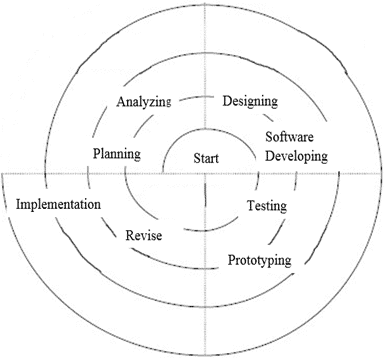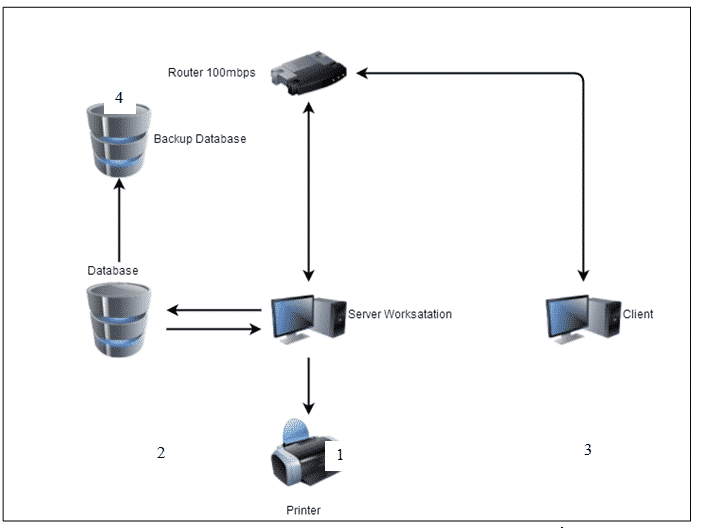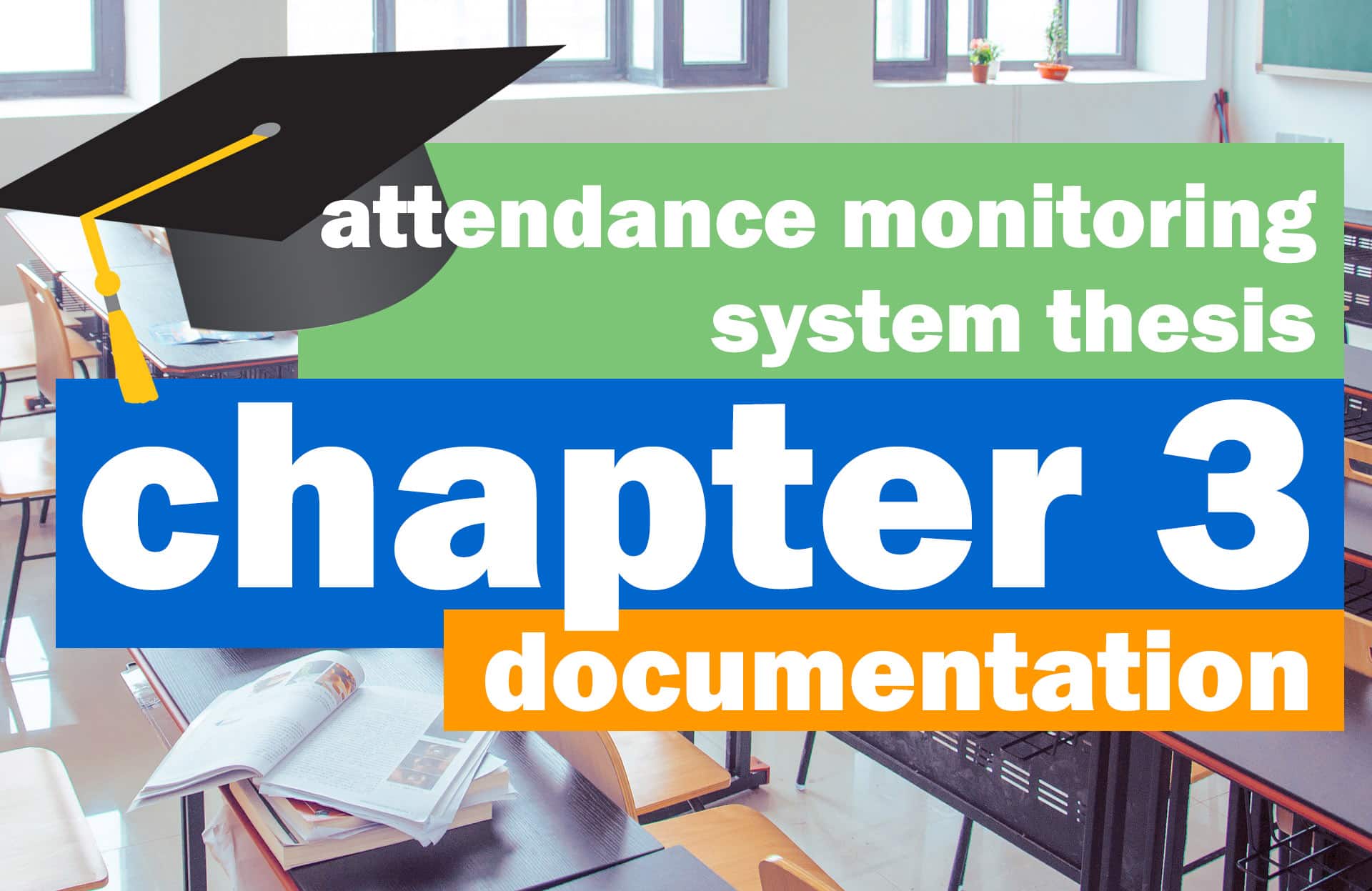Attendance Monitoring System Documentation | Chapter 3
Now that you have finished Chapter 1 and Chapter 2, it is time to work on your Attendance Monitoring System Chapter 3. In this guide, you will learn to discuss your methodology used in your thesis.
Steps in writing Attendance Monitoring System Methodology Chapter 3
How to write Attendance Monitoring System Methodology Chapter 3
- Methodology
In this part, you will generally describe the whole chapter 3 is about and tell what SDLC you chose to adopt.
- Systems Development Life Cycle
Next is discussing the Systems Development Life Cycle you chose in order to create your Attendance Monitoring System. There are a lot of SDLC methodologies you can choose from with advantages and disadvantages.
For this Attendance Monitoring System, Spiral Development Methodology was used. - Discussing the Chosen SDLC
You need to explain your actions taken following your chosen SDLC. The number of phases might differ in another SDLC.
- Constraints
Enumerate and explain the possible constraints that you might encounter during the development.
- Architectural Diagram
The Architectural Diagram illustrates the connections between hardware of the AttendanceMonitoring System. Also, write a short description below the diagram.
- System Testing and Implementation
In this part of the documentation, you will describe how the attendance monitoring system is implemented and tested by the users.
- System Features
Enumerate the functions of the Attendance Monitoring System.
- Recommended Hardware Specifications
List down all hardware the Attendance Monitoring System needs to work.
- Recommended Software Specifications
List down all softwares the Attendance Monitoring System needs.
- Recommended Network Specifications
List down all network peripherals the Attendance Monitoring System needs.
Attendance Monitoring System Methodology
This chapter discussed the methods used in the collection and analyses of data. The methodology focuses on the experiences of people involved and attempt to understand the reasons behind certain behavior description. The evaluation was carried out using data collection techniques and interviews. Generally, we used Spiral Method for the whole study.
Spiral Development Method

Planning
This part is the initiation part where the research study was started. In planning, we start in searching where we conduct our study and we decide to conduct our study in RTTNHS Su-Ay Ext. We plan on how to collect data and how to organize our time in conducting a research interview.
Organized the members of their individual roles and obligations in conducting the study. In planning, it includes analyzing, designing, software development, testing, and implementation.
Analyzing
In this stage, researchers conducted an interview in RTTNHS Su-ay ext. This is where researchers collected the needed data for the research. The part of the interview was to know what was being used in their current system and researchers noticed that the transactions were manually operated in the school.
After gathering the data and analyzed the problem according to their existing system, researchers analyzed how to give a concrete solution to those problems and based on the problem.
Designing
Designing is based on users and client roles. This stage is creating a design for the system. It includes a student registration form, teacher’s registration form, reports, attendance transaction, and student and teacher’s information management. The system is designed as a user-friendly system.
Software Development
Coding
In the development of the system, we made use of Microsoft Visual Basic Studio 2008 for encoding the source code of the system, in order to be accurate and fast acquisition of data and information.
Testing
After finishing the main parts of the transaction of the system, the proponents gave a test sample to the client and there is a lot of learning they encountered, it made them know the minor and major mistakes in the system and it gave the researchers more understanding on how to develop it.
Implementation
Documents were compiled for final output to be submitted to the client. This includes the documentation and software. Giving some user orientation or tutorials on how to use the system is held at this stage.
Attendance Monitoring System Constraints
The lists below are some constraints that may encounter during the operation.
- Natural Disaster – can naturally interrupt any operation in the school and such as floods, earthquakes, and typhoons.
- Hardware – in some cases like unexpected brownouts, using computerized transactions is unavailable and sometimes the hardware components of the computer like power supply, motherboard, and hard drive could be affected by the improper shutdown of the computer due to unexpected brownouts that will cause computer malfunctions. Improper use of the computer may also cause hardware problems.
- Software – computer virus is the most common problem in software functionalities. This is done by downloading from the internet like images, music, videos that are not necessary to the system. File sharing from infected USB pen drives could spread the virus to the computer system.
Architectural Diagram

The Figure 2: Architectural Diagram shows the network interface of the system that will be used for RTTNHS Su-ay Ext. (STAMS). The process starts in registering the students and teachers from the server workstation and automatically saved the data into the database.
After registration, the staff can record the attendance of students and teachers from the client computer. The student in the teacher’s information will retrieve from the database and process attendance recording.
The attendance record is also automatically saved in the database and backup database for total data security.
System Testing and Implementation
By making this project successful, the proponents tested the system to be used by the representatives from RTTHNS as users and clients of this project. This is to evaluate the systems functions that produce reliable information that makes the system more efficient and effective.
System implementation is very important to see the effects and importance and usefulness of the proposed system from the existing system.
The RTTNHS STAMS was tested in the Raymundo T. Tongson NHS Su-ay ext. faculty office with two (2) computer units. Computer 1 serves as a server computer that will be used by the Administrator. Computer 2 serves as a client computer that will be used by the school staff.
Attendance Monitoring System Features
The lists below are the feature that is included in the Attendance Monitoring System for RTTNHS Su-Ay Ext.
- Student Registration
- Teacher Registration
- Attendance Monitoring for student and teachers
- Easy retrieval of attendance record for both student and teachers
- Student and Teachers Information Management
- Daily and monthly Attendance Monitoring Report for Student and Teachers.
Recommended Hardware Specification
- Intel(R) Core(TM) i3-4170 CPU @ 3.70GHz, 3700 MHz, 2 Core(s), 4 Logical Processor(s)
- 8GB 1333MHz DDR3
- Dual 1GB LAN ports
- 400w Fixed UPS
- 1TB HDD
- Keyboard
- Optical Mouse
- LCD / LED Monitor.
Recommended Software Specification
- Windows 7 Ultimate 32bit
- Microsoft Visual Studio 2008
- Crystal Report for VS 2008
- PHP, MySQL, Apache
Recommended Network Specification
- N300 Wireless ADSL2+ 4-Port Wi-Fi Router
- UTP Cable Cat5e
- RJ 45
Conclusion
Now that you have read through the sample methodology of attendance monitoring system documentation, you are now ready to take the next Attendance Monitoring System Documentation chapter!
This attendance monitoring system documentation chapter 3 is free to modify. Surely, this guide will help you finish your own attendance monitoring system documentation.


The lists below are the feature that is included in the Attendance Monitoring System for RTTNHS Su-Ay Ext. https://aduk.de think same